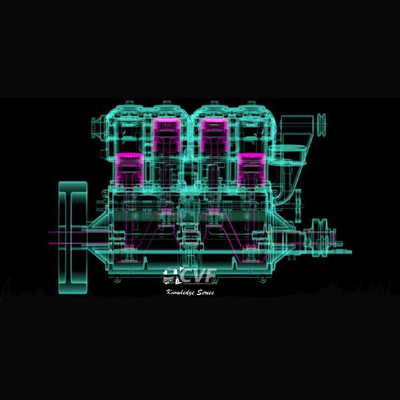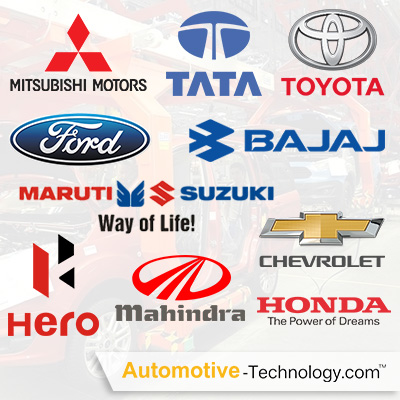Top 3 key vehicle tech devices in the Automotive Industry
Introduction:
The automotive industry has been experiencing a revolution in recent years with the rapid advancement of vehicle technology devices. These innovative gadgets and systems are reshaping the way we drive, enhancing safety, comfort, and efficiency on the road. Let's explore some key vehicle tech devices that are making waves in the automotive industry.
Key vehicle tech devices in the Automotive Industry
I) Advanced Driver Assistance Systems (ADAS): Advanced Driver Assistance Systems (ADAS) represent a transformative technology in the automotive industry. These cutting-edge systems are designed to enhance both the safety and convenience of driving by leveraging a combination of sensors, cameras, and computational power. Below, we'll delve deeper into ADAS and its various components:
1.1 Adaptive Cruise Control (ACC): Adaptive Cruise Control (ACC) is an integral component of Advanced Driver Assistance Systems (ADAS). It employs radar or sensors to autonomously regulate a vehicle's speed, ensuring a safe distance from the vehicle in front. This system can autonomously decelerate or accelerate the vehicle, providing a more relaxed driving experience, particularly on highways.
1.2 Lane-Keeping Assist (LKA): LKA systems use cameras to monitor lane markings and help drivers stay within their lanes. If a vehicle starts drifting out of its lane without signaling, LKA can gently steer it back into the correct lane.
1.3 Blind-Spot Monitoring (BSM): Blind-Spot Monitoring (BSM) employs sensors to identify vehicles located in areas outside a driver's direct field of vision and issues warnings through visual or auditory cues to notify the driver. This capability serves to mitigate the potential for accidents when changing lanes.
1.4 Automatic Emergency Braking (AEB): AEB systems utilize a fusion of sensors and cameras for ongoing monitoring of the road ahead, actively identifying potential collision risks. Should such a threat be recognized and the driver's response be delayed, the system can independently initiate braking, effectively minimizing or averting the imminent collision.
1.5 Parking Assistance Systems: ADAS includes various parking aids like parking sensors and automated parking systems. Parking sensors use ultrasonic or radar technology to provide feedback to the driver about the proximity of obstacles while parking. Automated parking systems can take over steering and parking maneuvers, making parallel or perpendicular parking easier.
1.6 Traffic Sign Recognition (TSR): TSR systems use cameras to identify and read road signs such as speed limits, stop signs, and no-entry signs. They then display this information on the vehicle's dashboard or head-up display, helping drivers stay informed about current road conditions.
1.7 Lane Centering and Traffic Jam Assist: These features build on lane-keeping assist by actively centering the vehicle within its lane and can work in stop-and-go traffic. They reduce the driver's workload in congested conditions, making commuting more comfortable.
1.8 Pedestrian Detection and Cyclist Detection: Some ADAS systems are equipped with pedestrian and cyclist detection capabilities. These systems can identify vulnerable road users in the vehicle's path and initiate emergency braking or provide warnings to prevent accidents.
1.9 Driver Monitoring Systems: Within ADAS, driver monitoring systems utilize cameras and sensors to monitor the driver's levels of attentiveness and alertness. If the system identifies indicators of fatigue or distraction, it can generate alerts or recommend taking a rest.
II) Infotainment Systems: In the automotive industry, infotainment systems have evolved into essential elements of contemporary vehicles, skillfully integrating information, entertainment, and connectivity to elevate the driving encounter. These systems provide an extensive array of functions that cater to both drivers and passengers. In this section, we delve into the essential elements and advantages of infotainment systems.
2.1. Touchscreen Displays: Most infotainment systems are centered on touchscreen displays integrated into the vehicle's dashboard. These touchscreens vary in size and functionality, providing an intuitive interface for accessing various features.
2.2. Navigation and GPS: Infotainment systems often include GPS navigation with real-time traffic updates. They offer turn-by-turn directions, and points of interest, and can even suggest alternate routes to optimize travel time.
2.3. Smartphone Integration: Infotainment systems support smartphone integration platforms like Apple CarPlay and Android Auto. This allows drivers to mirror their smartphone's interface on the infotainment screen, giving access to apps, music, contacts, and voice commands while minimizing distractions.
2.4. Audio and Entertainment: Infotainment systems control audio sources such as AM/FM radio, satellite radio, CD/DVD players, USB drives, Bluetooth streaming, and music apps. They also often feature customizable equalizer settings for audio quality adjustments.
2.5. Voice Recognition: Many infotainment systems incorporate voice recognition technology, enabling drivers to make calls, send messages, or input navigation destinations using voice commands, promoting hands-free driving.
2.6. Connectivity Ports: USB ports, AUX inputs, and sometimes wireless charging pads are integrated into infotainment systems to keep devices charged and connected.
2.7. Internet Connectivity: Some vehicles offer built-in 4G LTE or 5G connectivity, enabling web browsing and over-the-air software updates. Passengers can also connect their devices to the vehicle's hotspot for internet access.
2.8. Rear-Seat Entertainment: Infotainment systems may include features for rear-seat passengers, such as screens for watching movies, playing games, or accessing separate audio sources.
2.9. Vehicle Information: These systems provide access to important vehicle information like fuel efficiency, tire pressure, maintenance alerts, and more. Drivers can monitor the health and status of their vehicles in real-time.
III) Connected Car Technology: Connected car technology represents a significant advancement in the automotive industry, transforming traditional vehicles into smart, networked entities. This technology leverages the Internet of Things (IoT) to connect vehicles to the Internet, providing numerous benefits and opportunities for both drivers and automakers. Here's a detailed look at connected car technology and its key components:
3.1. Telematics Control Unit (TCU): At the heart of connected car technology is the Telematics Control Unit, a hardware component that enables communication between the vehicle and external networks. TCUs are equipped with cellular modems and GPS receivers, allowing them to send and receive data.
3.2. Remote Diagnostics: Connected cars can perform remote diagnostics, continuously monitoring the vehicle's health and performance. When an issue arises, the system can send diagnostic data to the automaker or a designated service center, allowing for proactive maintenance and quicker problem resolution.
3.3. Over-the-Air (OTA) Software Updates: One of the most significant benefits of connected cars is the ability to receive OTA software updates. This feature enables automakers to deliver bug fixes, security patches, and new features to vehicles remotely, reducing the need for in-person service visits.
3.4. Vehicle Tracking and Recovery: GPS-enabled connected car systems can track the vehicle's location in real time. This feature aids in vehicle recovery in case of theft and can also be used for fleet management purposes.
3.5. Emergency Services (eCall): In the event of an accident, connected cars can automatically contact emergency services, providing vital information such as the vehicle's location and the severity of the crash. This feature can significantly reduce response times and save lives.
3.6. Infotainment and Connectivity: Connected cars offer advanced infotainment systems with features like internet browsing, streaming services, and app integration. Passengers can stay connected and entertained during their journeys.
3.7. Predictive Maintenance: Connected car technology can analyze data from various sensors and systems to predict when components might fail. This proactive approach to maintenance can prevent breakdowns and reduce repair costs.
3.8. In-Car Wi-Fi Hotspots: Many connected vehicles have built-in Wi-Fi hotspots, allowing passengers to connect their devices to the internet while on the move.
3.9. Vehicle-to-Cloud Communication: Connected cars can transmit data to the cloud, where it can be analyzed and used for various purposes, such as improving traffic management, developing better navigation systems, and enhancing the overall driving experience.
Conclusion:
In summary, the automotive industry is currently undergoing a transformative shift powered by cutting-edge technologies. With ADAS bolstering safety, infotainment systems elevating connectivity, and connected car technology turning vehicles into intelligent, networked entities, these breakthroughs are reshaping the landscape of driving. As technology continues its evolution, the industry is poised to guide us toward a future of transportation that is not only safer but also more interconnected and environmentally sustainable.



